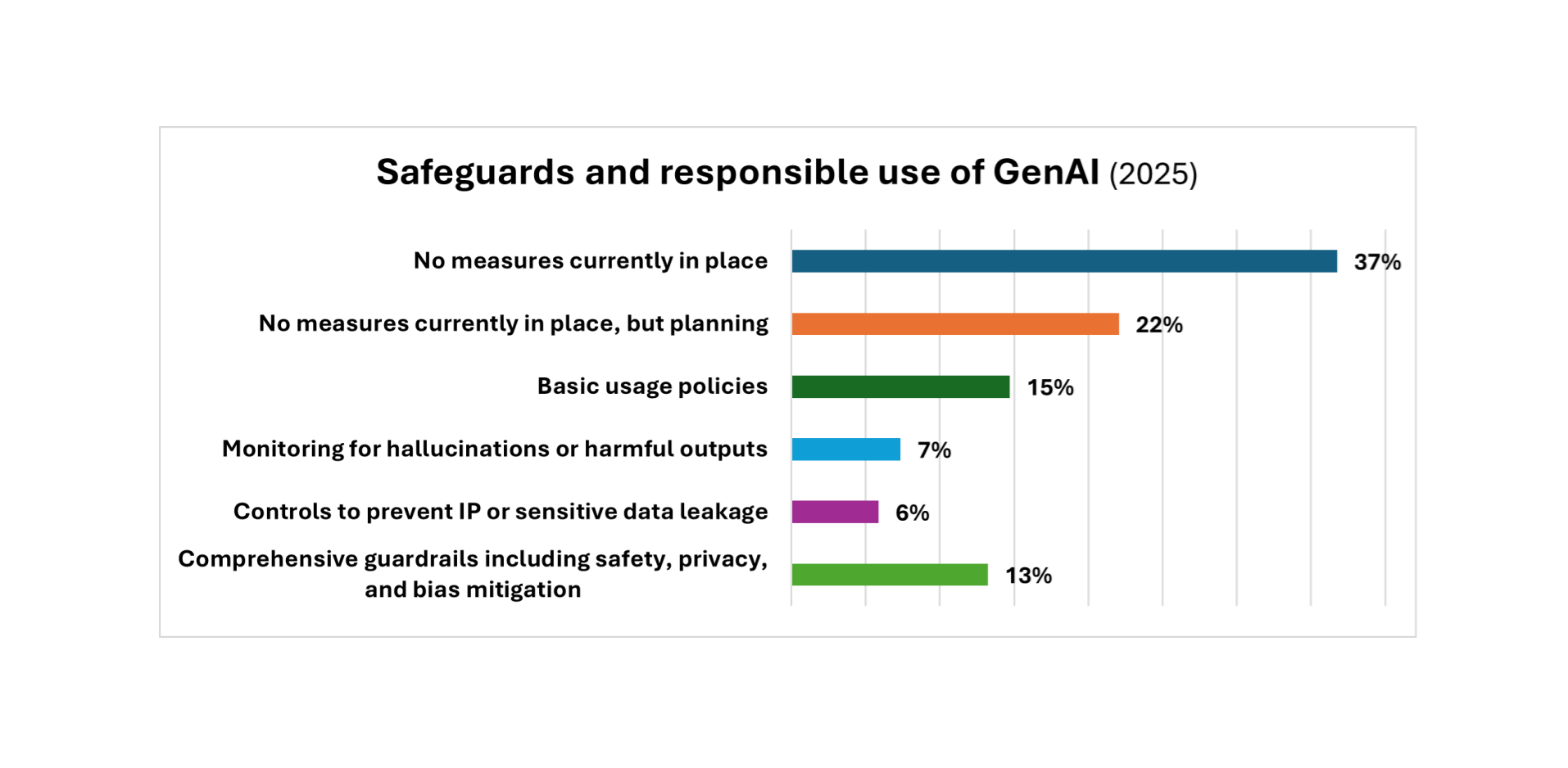The new SA Generative AI Roadmap 2025 reveals a vast gap between use and governance of GenAI, writes ARTHUR GOLDSTUCK.
South African business leaders are embracing generative AI (GenAI) with all the enthusiasm of a gold rush, but many seem to have misplaced the map. New research reveals that, while two-thirds of large enterprises in the country have already adopted GenAI tools, only a fraction have policies or governance in place to manage how it is used.
This disconnect between uptake and oversight raises urgent questions about how organisations are balancing innovation with responsibility, according to the South African Generative AI Roadmap 2025, a research study conducted by World Wide Worx in partnership with Dell Technologies and Intel.
The data suggests that companies are charging ahead to gain early advantage, even as guardrails lag far behind. In an environment where misinformation, data leakage and operational risk are just one careless prompt away, that lack of foresight could prove costly.
The key finding is that 67% of large enterprises are already using GenAI tools in one form or another. This marks a sharp rise from 45% in 2024, signalling a move from cautious exploration to real-world deployment. But the numbers tell only part of the story. Fewer than one in seven companies surveyed have a company-wide strategy for integrating GenAI. A further 22% have strategies in specific divisions, leaving the majority without any structured plan for how GenAI fits into broader business operations.
This lack of strategic clarity is mirrored in the way organisations manage risk. While 35% of businesses have either basic policies or more advanced governance in place, a staggering 59% either have no measures at all or are still talking about it or in the planning stages.
Tony Bartlett, director of data centre specialist sales for Dell Technologies South Africa, says the fast pace of adoption demands a level-headed approach. “It’s important to be fast, but it’s really important to know exactly what you’re doing, what you’re creating, and that the customer is at the centre.”
The speed at which GenAI is being integrated into business functions creates the illusion of progress but, behind the scenes, the plumbing is still under construction. For many organisations, enthusiasm for AI has outpaced the practical capacity to manage it. Only 13% of enterprises have implemented comprehensive guardrails that include safety protocols, privacy protections and bias mitigation.
“Organisations need to enhance their employees’ skillsets to get the most out of any GenAI deployment,” says Bartlett. Without that investment in people and process, the risk of shadow AI – the unauthorised use of GenAI tools by employees – increases, along with the likelihood of reputational and operational fallout.
While the promise of GenAI is often framed in terms of productivity and automation, many organisations are struggling to define what it actually does for them. One in five respondents cite an “unclear business case” as a barrier to adoption. And 26% of companies say they’ve seen no measurable time savings from their deployments. This does not suggest that GenAI has no value, but that its implementation is often haphazard, fragmented or misaligned with business goals.
Bartlett’s perspective reinforces this: “To measure the true impact of GenAI on their business, optimise implementation costs and achieve long-term objectives, organisations need to analyse operational, quality, adoption rate, and marketing and sale metrics.”
The irony is that many organisations already understand that GenAI will require governance, even if they haven’t yet implemented it. Of those surveyed, 43% say the chief information officer is responsible for GenAI oversight, while a further 36% place it in the hands of other technology leaders. Yet 9% report that no one is formally in charge of GenAI governance at all.
Part of the problem lies in the perception of GenAI as an experimental or low-stakes technology. In the early phases of digital transformation, organisations often treat new tools as side projects rather than as core infrastructure. But GenAI is already shaping customer experiences, internal processes and even product development. The longer governance remains an afterthought, the more vulnerable businesses become to missteps that could have been avoided.
Bartlett is optimistic about the trajectory of GenAI, but his comments carry a warning: “These rewards do not come without risks, from data security and integrity to system availability, compliance and governance.”
In other words, the genie is out of the bottle, but that does not mean it should be allowed to wander around the office unsupervised.
* Arthur Goldstuck is CEO of World Wide Worx and principal analyst for the South African Generative AI Roadmap 2025 research study.
* View the SA Generative AI Roadmap 2025 report here.

